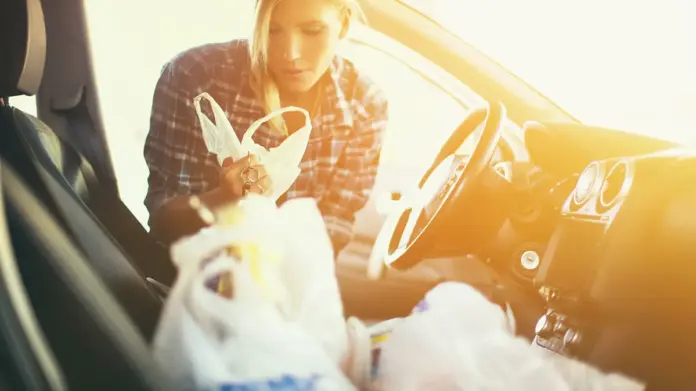Whether you shop for groceries in-store or have them delivered, if the temperatures inside your car or the delivery vehicle are too high, it’s a food safety hazard. Heat not only can quickly spoil your fresh fruit and vegetables but also can speed the growth of germs that contribute to food poisoning, especially in meat and fish.
MORE ON FOOD SAFETY
The Department of Agriculture recommends that meat never be left unrefrigerated for longer than 2 hours—but that gets cut to just an hour when the temperature reaches 90° F. And bacteria continue to thrive until temperatures reach about 140° F, according to the USDA. Cars can heat up fast, too. For instance, if it is 80° F outside, the car temperature can reach 99° F in just 10 minutes and 109° F in 20 minutes, according to the National Weather Service.
Here are some tips to keep your groceries cool, and safe, during hot summer shopping trips.
Summer Grocery Shopping Tips
Plan your errands. For most of the year, it doesn’t matter much in which order you tackle your to-do list. Not so in summer. “Make sure grocery shopping is the last thing you do before heading straight home,” says Suzanne Driessen, a food safety educator at the University of Minnesota.
Park in the shade. Staying out of the direct sun can help keep your car from turning into an oven.
Use insulated bags. You can purchase bags that come with thicker linings to keep cold foods cold. Some have space for cooler packs. And take them into the store with you, so the bags don’t get hot while you are shopping. “Leave them in the car and you’ve defeated the whole purpose,” Driessen says. For extra-hot days or long trips, when you get back to the car you can transfer the groceries into a cooler. If you’re using a cooler and you have a long drive, chill the inside of the cooler before you leave (and load with new ice or gel packs before you head to the store).
Shop strategically. Make perishables the last items you put in your grocery cart, so they stay cool for as long as possible.
Watch for meat and fish. They pose the the biggest temperature-related food safety risk, says James E. Rogers, Ph.D., director of food safety testing and research at Consumer Reports. “An increase in temperature allows bacteria to multiply, especially the types that cause food poisoning,” Rogers says. Milk and dairy products don’t face the same risk, because they have been pasteurized. Still, “you might end up with spoiled milk,” Rogers says.
Pack smart. That means putting like things together, especially frozen with frozen. Note that while refrigerated items should also be bagged together, meats and fish should be bagged separately from other foods to avoid cross-contamination.
Avoid the trunk. When you get back to your car, don’t put the groceries in the trunk, which tends to be the hottest part of a car. Instead, put groceries in the air-conditioned cabin. And while you may think it’s better to put them on the floor, out of the sun, they’ll stay cooler if air circulates around them. “I always put my bags on the seat,” Driessen says. And don’t pack bags too tightly together or you’ll lose the benefits of the circulating air.
Don’t forget takeout. If you’re picking up dinner from a restaurant, head straight home. Takeout food is as susceptible to food safety issues as groceries are.
Check on deliveries. If you’re having groceries delivered, the USDA recommends tracking your order so you can bring them inside immediately. Also check to make sure perishables were packed in insulated containers, or with ice packs.
Refrigerate immediately. Whether you shop yourself or use a delivery service, unpack and put perishables away promptly.
Summary:
This article written by Jesse Hirsch outlines the safest practices for loading your groceries into your car. When it is hot outside there is a high probability of your groceries spoiling. Sensitive groceries such as meat and dairy products can only be left unrefrigerated for up to 2 hours. The best way to avoid food poisoning is to plan ahead, park in the shade, use insulated bags, shop strategically, pack smart, avoid the trunk, and refrigerate immediately. The section that interests me the most is avoiding the trunk. The trunk is the hottest section of the car, yet this is often the most convenient place to put your groceries. Often times people will put their groceries on the seat. This is a safer option since the air can circulate around the groceries better in the air-conditioned cabin of the car. This article is directly related to the transporting of groceries and this research will help me better understand a user’s needs.
Works Cited:
Hirsch, J. (n.d.). Keeping groceries safe in a hot car. Consumer Reports. https://www.consumerreports.org/food-safety/keep-groceries-food-safe-in-hot-car/#:~:text=Avoid%20the%20trunk.,if%20air%20circulates%20around%20them.




